
Susan Lizotte is on fire. Her recent landscape paintings that present LA at the edge of apocalypse not only offer images of chaos and climate change, but burn with both beauty and ferocity. Viewed at Start-Up LA in February, her series Los Angeles: A Different Narrative, contains paintings both ominous and graceful, unsettling cautionary tales.
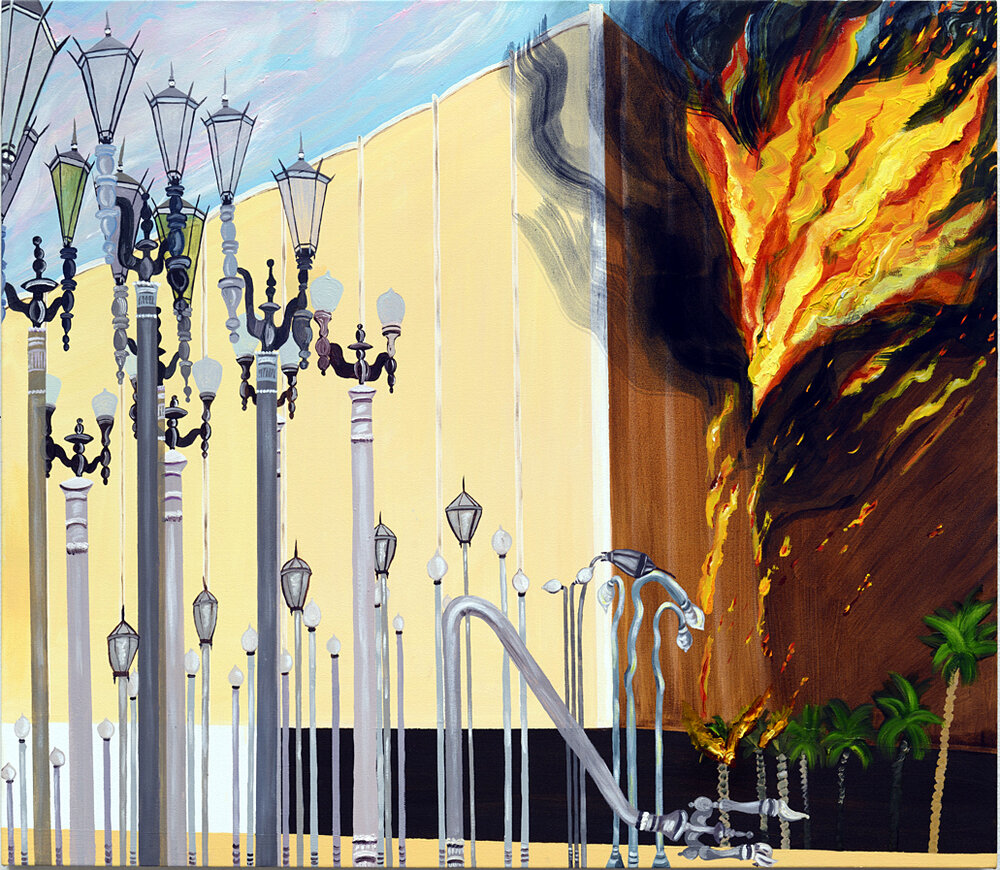
The events she depicts are visionary – whether they had literally occurred in the moment she painted them, they go beyond the merely imagined to a bolder place of warning; offering a message of stark, raw beauty along with the terror of the possible.
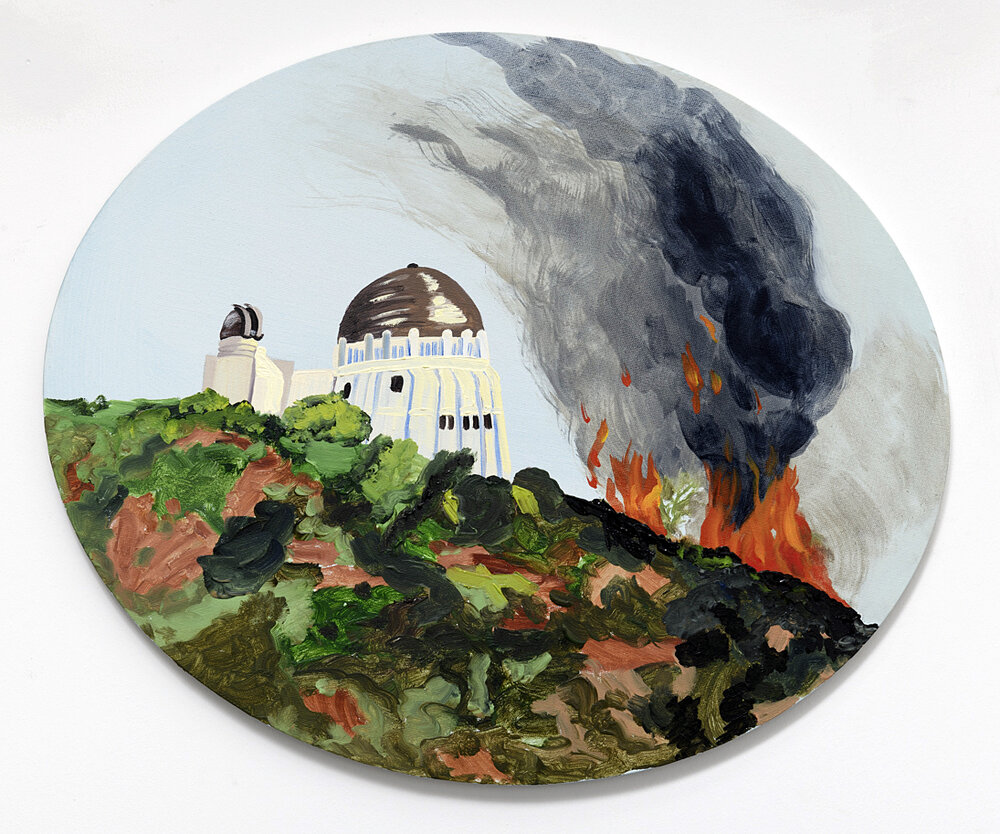
Time has proven their portent. Smoke wafts across a Beverly Hills street; threatens the iconic Chris Burden light sculpture at LACMA, roars behind the Hollywood sign. In one image, an overturned car burns; in another, a lamppost oozes like a snake from the heat.

Rooted in recognizable locations, the looming disasters are visceral and immediate; road signs to a future we should’ve seen, but have instead ignored, as we teeter on beautiful disaster.

Coupled with her Spring Map series, Lizotte has created richly rewarding work that paint an eerily accurate direction for these times. Her current map work, layered and almost ghostly, continues and expands upon and builds upon ideas from an earlier body of map work first viewed in 2017.
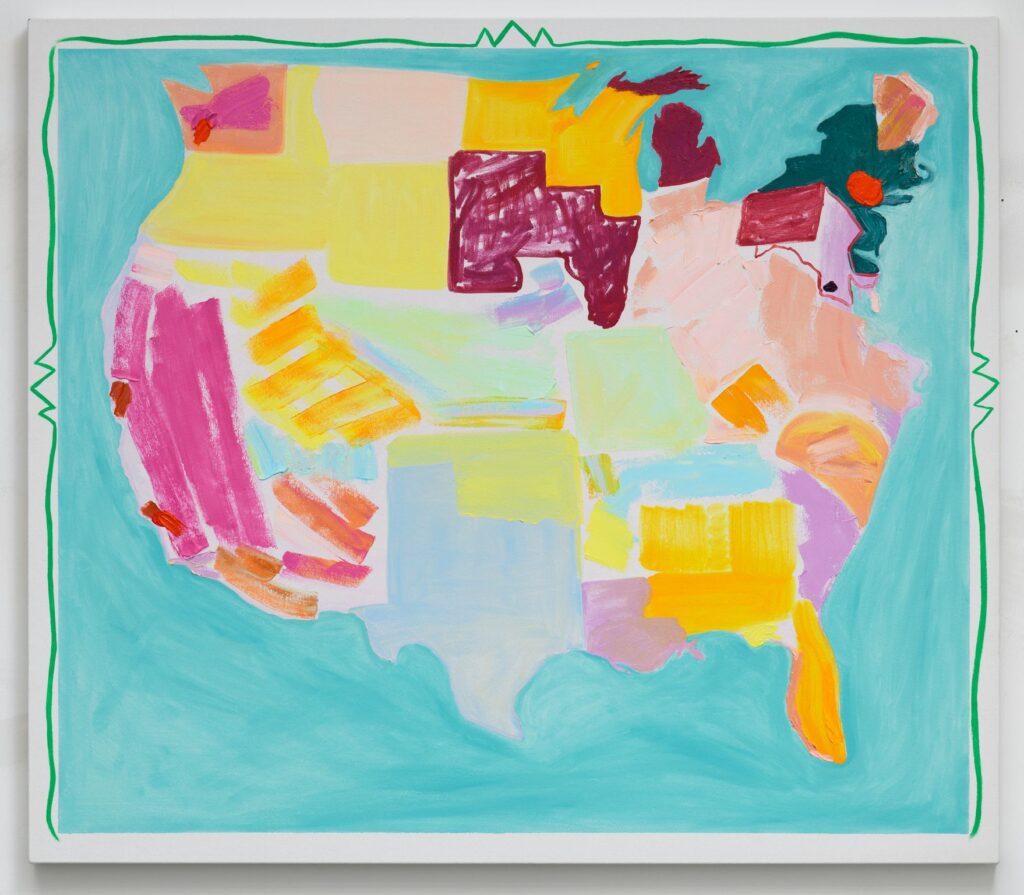
Lizotte says of her latest maps that she is exploring abuse of power, control, image making, and mercury poisoning, among other ideas. Fecund and floral, the lands are also broken. Some resemble a confetti patchwork that could be geographic, representations of disease statistics, representations of a divided land, as with her map of America above.
They evoke the corruption of power and greed that virulently affects the globe today, just as much as it did in the 15th century world that Lizotte has meticulously researched to shape a number of them. The images serve as both treasure hunt and treatise, a deep, soul-aching knowledge revealingly spread out in evocative grids and symbols.

She describes the series as born from both her “thoughts and dreams;” noting that these paintings are inspired by the quarantine of Covid-19.

As such, they are a means to juxtapose the 14th century plague with the 21st century pandemic. Using Renaissance maps to speak to the spread of today’s epidemic feels fitting indeed as a way of finding our place in a new and unknown world.

Lizotte reveals that the geography of these old maps is inaccurate, which is one reason the images feel strange and unsettling. “I’m using this inaccuracy deliberately to convey confusion and disorientation.

The very inaccuracy of the maps add to a sense of inchoate unease. Splashes of pink and emerald lie like broken jewels against a pale background; symbols of power and borders drawn dismember the natural world. Her Mappa Mundi, above, was inspired, Lizotte says, by Martin Waldseemuller’s 1507 map of the globe which was the first map that included America. She used 12 canvasses, and shaped the same exact measurements of the original from 18 24-inch squares. There are fire-breathing dragons, falling plains, and cast off broken flowers; the debris of the world colliding.
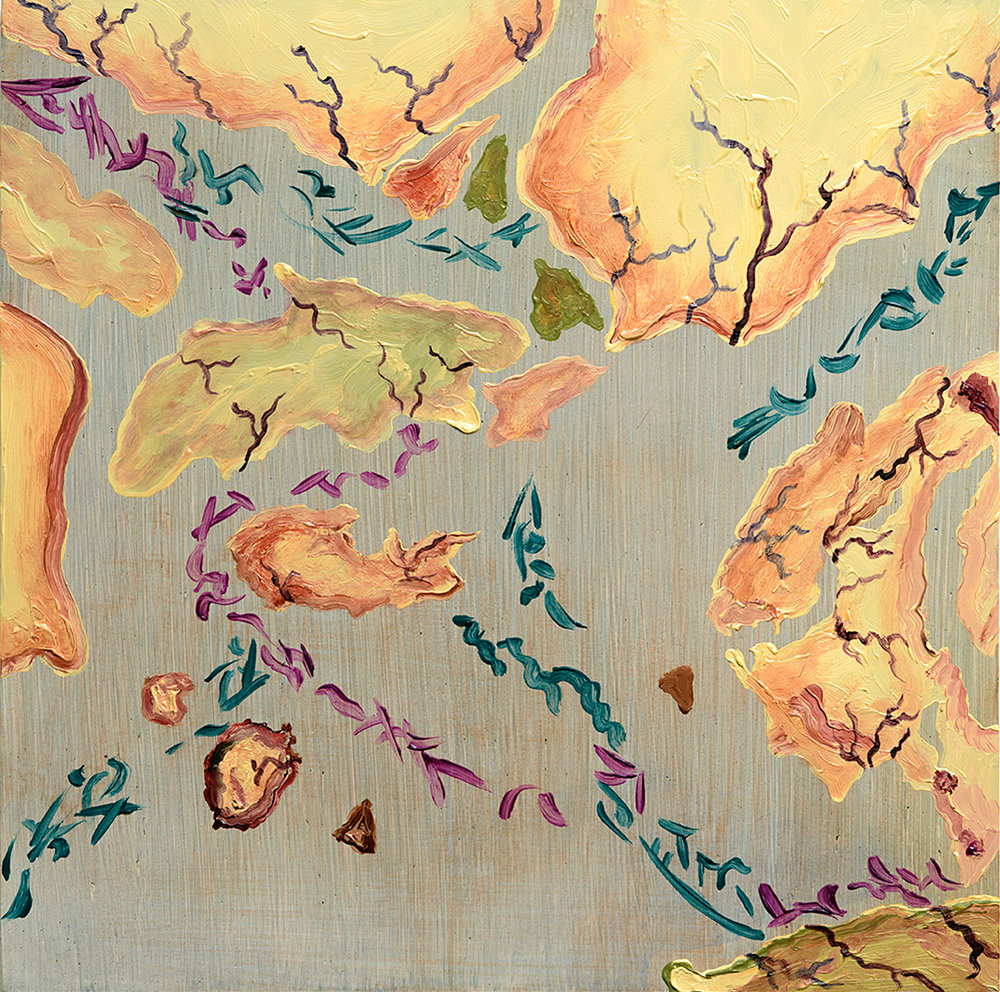
In both her current and earlier (above) body of map work, her vivid palette compels, creating a sense of urgency in the images that evokes both ruin and loveliness.
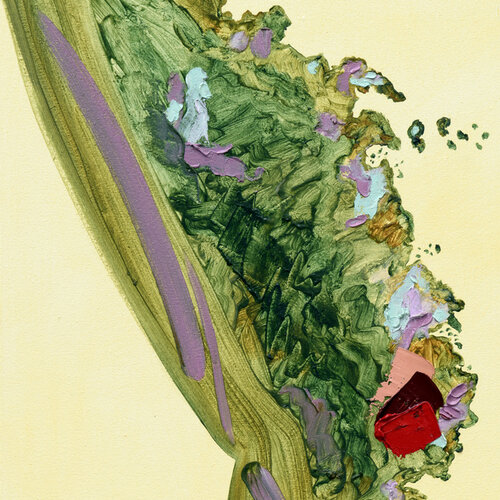
They serve as elegy to both past and future, a vivid and thought-provoking testimony to human existence. That existence is always linked to the natural world, one not subject to development and borders.

Rather, nature – our own and that of the earth itself – needs no boundaries, just healing. Lizotte’s work gives viewers the visual language to understand and explore just that.
- Genie Davis; photos courtesy of the artist


